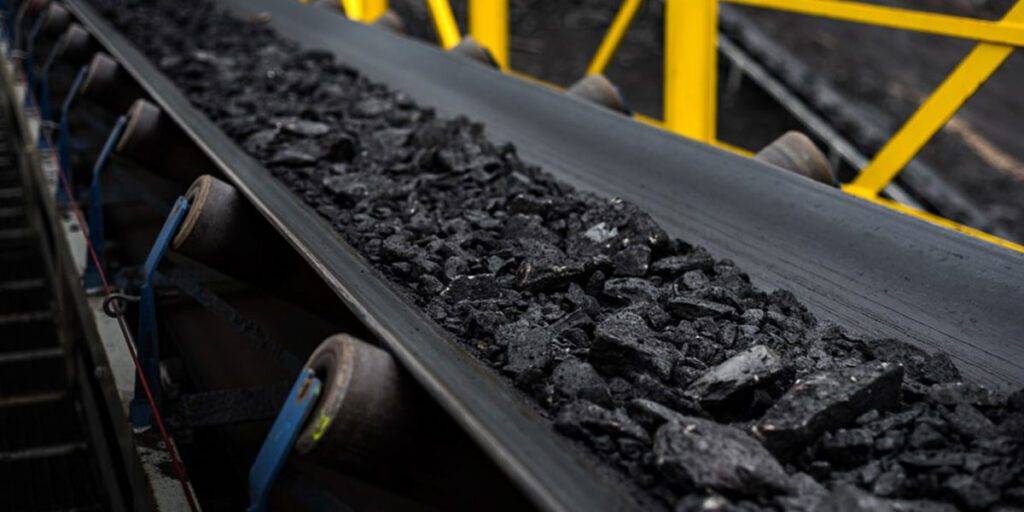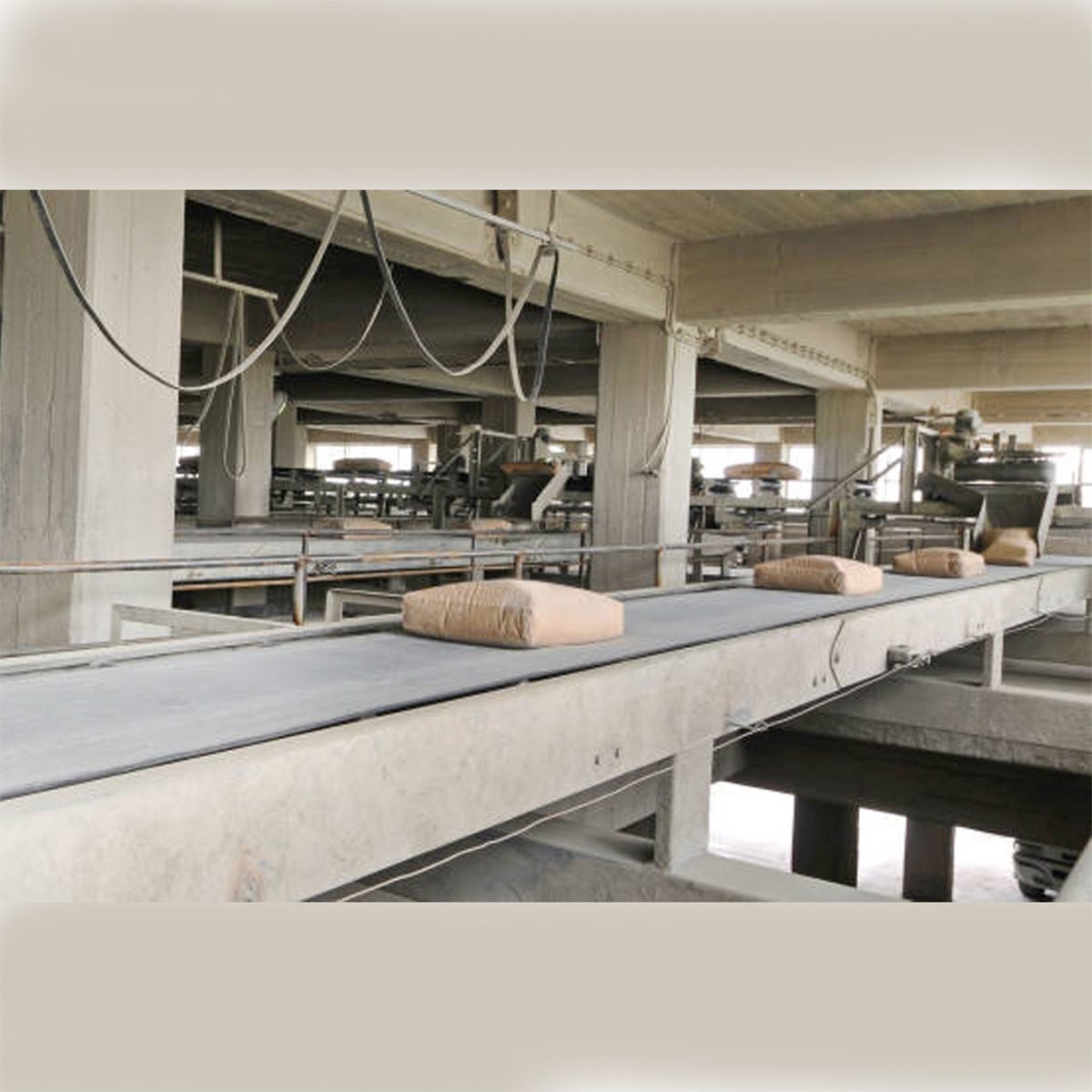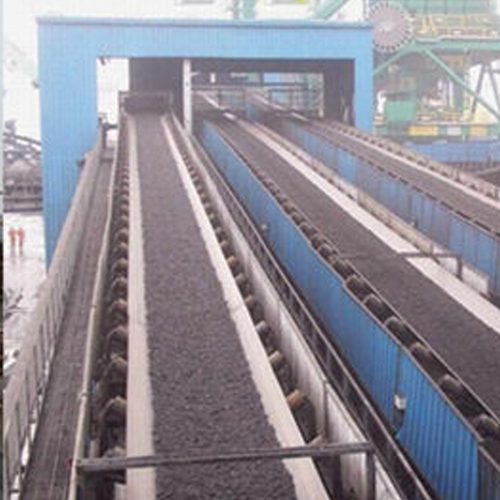Are you in search of a durable rubber conveyor belt for the cement, mining, or stone crusher industry? Our high-quality rubber belts are designed to withstand the toughest materials in bulk material handling applications. Get a quote now.
Industrial conveyor belts are essential components of various industrial systems and play a critical role in transporting materials and goods from one place to another. Conveyor belts are used in a wide range of industries, including mining, manufacturing, food processing, and logistics
Lakhotia India Private Limited is a leading Industrial conveyor belt supplier in Chennai, India, offering high-quality rubber conveyor belts and industrial equipment. Enhance your productivity with our reliable conveyor solutions.
Key Components of Rubber Conveyor Belts
To understand the specifications of rubber conveyor belts, it’s important to be familiar with their key components:
Cover Rubber
The cover rubber is the outermost layer of the belt, protecting against wear, abrasion, impact, and other external factors. It is essential to select cover rubber with properties that match the specific application and operating conditions.
Carcass
The carcass is the core structure of the belt, responsible for its strength and flexibility. It consists of one or more layers of fabric or steel cords embedded in rubber. The carcass determines the belt’s tensile strength and impact resistance.
Reinforcement
Reinforcements, such as fabric or steel cords, are embedded within the carcass to enhance the belt’s strength and load-carrying capacity. They contribute to the overall durability and performance of the conveyor belt.
Fabric and Steel Cords
Industrial conveyor belts can utilize either fabric or steel cords as their reinforcement material. Fabric belts are suitable for general-purpose applications, while steel cord belts offer higher tensile strength and are ideal for heavy-duty operations.

Rubber Conveyor Belt Specifications
Belt Width and Length
The width and length of the conveyor belt should be determined based on the application and available space. It is crucial to select a belt size that can accommodate the desired material volume and conveyor system layout.
Belt Thickness
The thickness of the belt affects its strength, impact resistance, and flexibility. Thicker belts are suitable for heavy-duty applications, while thinner belts offer increased flexibility and can be cost-effective for lighter loads.
Tensile Strength
Tensile strength refers to the maximum force a belt can withstand without breaking or elongating. It is a critical specification that determines the belt’s load-carrying capacity and resistance to tension during operation.
Impact Resistance
The ability of a conveyor belt to withstand impact and absorb energy is vital in applications where materials are dropped onto the belt or subjected to sudden impacts. Impact-resistant belts minimize damage and prolong the belt’s lifespan.
Heat and Cold Resistance
Industrial conveyor belts may operate in extreme temperature conditions, requiring them to resist heat or cold. Heat-resistant belts are suitable for high-temperature applications, while cold-resistant belts maintain flexibility and strength in low-temperature environments.
Flame Retardance
In industries where fire hazards exist, flame-retardant conveyor belts provide an added level of safety. These belts are designed to self-extinguish and prevent the spread of flames in case of fire.
Industrial Conveyor Belt Features
Belt Material Composition
Industrial conveyor belts can be made of different materials, such as rubber, PVC, or metal. The choice of material depends on factors such as the type of material being
g transported, the temperature and humidity conditions, and the required strength and durability.
Belt Speed and Power Requirements
The speed at which a conveyor belt operates and the power it requires are crucial factors to consider. Balancing the desired throughput with energy efficiency is essential for maximizing productivity and minimizing operational costs
Load Capacity and Belt Tensioning
The load capacity and tensioning capability of a conveyor belt determine its suitability for particular tasks. Heavy-duty applications necessitate belts with higher load-bearing capacities, while proper tensioning ensures optimal performance and prevents slippage.
Tracking and Alignment Systems
Maintaining proper tracking and alignment is essential to prevent belt damage and ensure smooth operation. Advanced conveyor belts often feature tracking and alignment systems that automatically correct any deviations.
Industries Uses

Cement Industry

Stone Crusher Industry

Coal Handling

Mining Industry
Mining
Materials in mining operations, such as coal, iron ore, and copper. They are also used in the transportation of heavy equipment and machinery.
Manufacturing
M24-grade industrial conveyor belts are used in the manufacturing industry to transport raw materials and finished products. They are commonly used in assembly lines, packaging, and material handling.
Food Processing
PVC Conveyor belts are used in the food processing industry to transport food products, such as fruits, vegetables, meat, and dairy products. They are designed to meet strict hygiene and safety standards, such as FDA and USDA regulations.
Logistics
Industrial conveyor belts are used in logistics and distribution centers to transport packages and goods. They can be customized to accommodate various types of products, such as boxes, crates, and pallets.
Our industrial conveyor belts are designed to meet the highest standards of durability and efficiency. With a range of sizes and materials to choose from, Lakhotia India heavy duty conveyor belts can handle heavy loads, harsh environments, and continuous operation. Trust our expertise and experience in the conveyor industry to deliver the solutions you need for your production line.
Industrial conveyor belts are used to move materials from one place to another in factories and manufacturing facilities. They are durable and can withstand heavy loads, making them essential for production lines.
Industrial rubber belts come in different types such as flat, trough, and cleated belts, and can be customized to fit specific applications. With the help of rubber conveyor belts, industries can improve efficiency and increase productivity in their operations.


